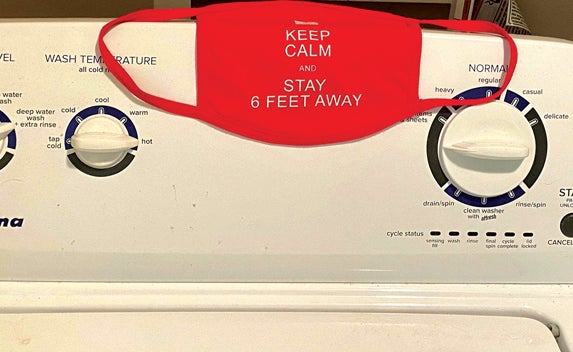Clean that mask!… Proper cleaning just as important as the wearing of masks
Published 3:29 pm Tuesday, August 11, 2020
|
Getting your Trinity Audio player ready...
|
BY BRITTNEE NAVE
STAR CORRESPONDENT
Shirt, shoes, pants and a mask: the basic outfit of 2020.
With mask mandates and guidelines to combat COVID-19 being in full swing, wearing a mask has become part of everyday life for the time being.
With that being said, there may be a forgotten aspect to the mask…cleaning it.
It’s easy to rip off that constrictive mask once back in the car from the store, however, without proper cleaning, infections can still spread.
The CDC has laid out guidelines on how to properly wash masks.
Masks can be washed with regular detergent along with the regular laundry. It should then be dried in the dryer on the highest setting. Masks can be laid flat, preferably in direct sunlight.
Not laundry day? Well, masks can also be washed by hand.
The CDC provides a recipe for doing so, which includes five tablespoons (one-third cup) household bleach per gallon of room temperature water or four teaspoons of household bleach per quart of room temperature water.
Be sure to check the label to ensure it is for disinfecting.
After creating the cleaning brew, soak the mask for five minutes and rinse thoroughly with cool water.
Similar to the CDC, Johns Hopkins Medicine provides tips on cleaning procedures as well.
In an article titled “Coronavirus: How to Care for Your Face Mask,” reviewed by Lisa Lockerd Maragakis, M.D., careful removal tactics are discussed.
This includes avoiding contact with the front of the mask (deemed contaminated), removal by touching the loops of the mask behind the ears, throwing away filters and washing hands afterward.
Another cleaning method included by Johns Hopkins is washing masks by hand in hot water for 20 seconds.
The Mayo Clinic follows similar medical advice on mask disinfection as Johns Hopkins and the CDC. It is detailed that masks should not be stored in pockets for later use, but rather folded with the contaminated side inward, and placed in a bag for cleaning.
Additionally, hygiene is stressed after removal to avoid contamination to the person. Until hand washing is done, people are urged to not touch their eyes, nose or mouth.






